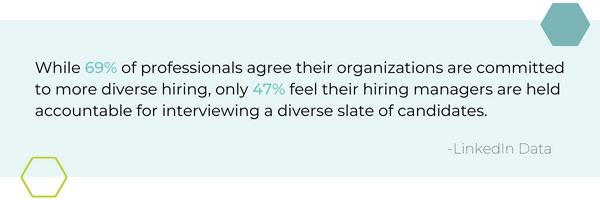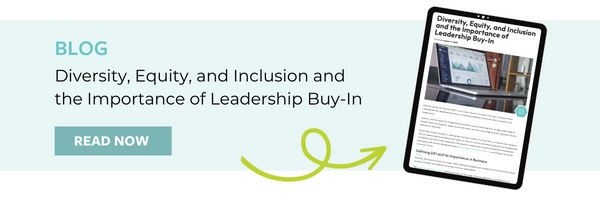Creating a Diversity, Equity, and Inclusion (DEI) strategy is essential for any company that wants to foster an inclusive work environment. A DEI strategy is a roadmap for creating an organization where everyone feels safe, respected, and valued. It is an ongoing process that requires commitment from every level of the organization.
Hueman's Executive Vice President, Joe Marino, moderated an engaging panel with Diversity and HR leaders to discuss the tactics for building a successful diversity recruitment strategy. There were many great takeaways from the panelists.
Here are five powerful tips and insights from our RPOA webinar to strengthen diversity, equity, and inclusion in an organization.
1. Create and Establish a DEI Committee
Start by creating a survey to help identify employees interested in joining the committee and gauge their interest in DEI. From then, you can begin to select members to make up your committee. Your team should be made up of volunteers to ensure that everyone is there for the right reasons.
"DEI committees are important. You're building a team and a village. You're getting different perspectives from different departments, and everyone is pitching in to see how to reach measurable goals." -Camron Murphy, managing director of FEAM Maintenance/Engineering
You can also use this survey to gauge the diversity of your current work population. Make sure you include race, gender, age, ethnicity, veteran status, family status, socioeconomic status, and more. Acknowledging how wide-ranging diversity is can help you better understand your employees.
2. Get Leadership Buy-In
Every part of a company is only as substantial as the leaders who buy into it, especially for a DEI committee. To make real, significant, changes within a company, it is up to company leaders to support and advocate for growth.
As Joe Marino stated in the webinar, "A DEI strategy will only be successful to the extent that the highest level leader (CEO, owner, or board of directors) truly supports the initiative. If this isn't in place, spend your time getting the buy-in from executive leadership before trying to roll out any initiatives."
When the executive team chooses to put focus on strengthening their hiring pool through diversity, equity, and inclusion, they can ensure they are creating a strong work environment where everyone feels included. When there is an emphasis put on DEI throughout the company as a whole, it is setting up the company for success.
3. Create a DEI Mission Statement and Set Goals
Mission statements will help define what your DEI goals and strategy mean to your company. It serves as the foundation of your overall DEI strategy and helps employees, candidates, and clients understand your ideology. A mission statement will also help you create and continually update DEI goals as you progress in your journey.
Goals are building blocks of your DEI program and hold you accountable for efficiently achieving them. Setting goals will also help your members know what to focus on in their day to day to ensure progress is being made.
Creating both short-term and long-term DEI goals will help your employees know where your company stands and what they should expect from all of their employees.
4. Create Opportunities to Educate Employees and Clients
A comfortable place to start is to ensure that your company has a safe space for employees to communicate any concerns or speak out on changes they feel need to be made. Look at the data around your workforce and develop conversations and learning opportunities.
"This isn't a 20-year project. It is a yesterday project that we are behind in already. It's okay to start small, but there needs to be plans in place to grow." -Lotus Buckner, Panelist member and Leadership Development Consultant
A few examples of education opportunities include inviting diverse speakers to your panels, sharing diverse employees' stories, and providing education on unconscious bias and diversity training opportunities. It's vital to prioritize DEI and educate employees on its importance within the company.
5. Continue to Learn and Grow
DEI is not a one-size-fits-all process, nor is it an overnight fix. Your DEI strategy and goals should evolve as your company and employees grow. Make sure to set processes in place to evaluate and track your progress.
There is always more work to be done to ensure that you are as inclusive and equitable as possible. In the coming years, continue to survey your employees and partners, listen to them, collect data, and evolve your plan until you stand for every employee, partner, and the larger community.
Establishing a DEI strategy can seem overwhelming, but all businesses must have one. These steps are a great starting point for establishing your own DEI strategy or even reviewing the DEI efforts you have in place today.
If you'd like to learn the best practices for launching your own DEI recruitment strategy, contact us today.



